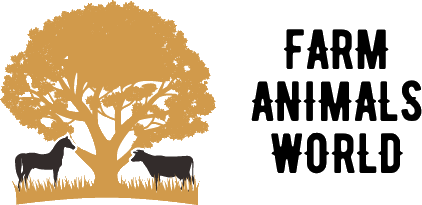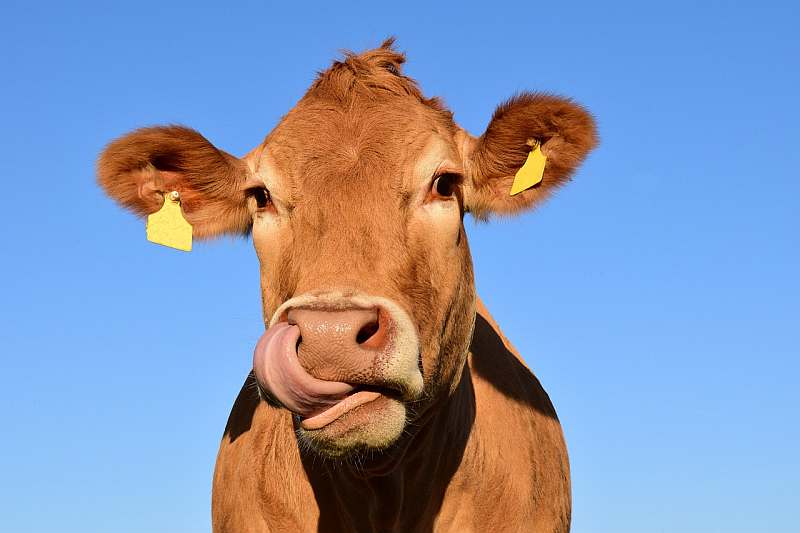Have you ever observed a cow relishing a salt lick and wondered why do cows lick salt? You’re not alone. It’s crucial to understand that salt isn’t just a tasty treat for them; it’s a vital part of their diet.
In this article, we’ll delve into the science behind this phenomenon, explore the importance of salt in bovine nutrition, and its impact on milk production.
We’ll also highlight the risks of salt deficiency and effective supplementation strategies.
So, let’s get moving!
Key Takeaways
- Cows have complex nutritional needs, including minerals like salt.
- Salt is essential for a cow’s overall health, digestion, and milk production.
- Salt licks provide essential minerals and help fulfill a cow’s mineral needs.
- Salt licks aid digestion and ensure cows receive necessary nutrients.
Understanding Basic Bovine Nutrition
While you may think cows only eat grass, it’s crucial to understand that their nutritional needs are more complex and include a blend of proteins, carbohydrates, and minerals such as salt. These needs influence bovine eating habits. Grazing patterns emerge based on the availability of these nutrients in their environment.
For instance, a cow’s diet isn’t solely grass but also hay, silage, and grain. They graze on pastures, consuming a variety of plants to meet their nutritional requirements. The salt-licking habit is vital for them as it fulfills their mineral needs. It’s essential for their overall health, digestion, and milk production.
Importance of Salt in Cows’ Diet
You mightn’t know it, but salt plays a crucial role in a cow’s diet, serving numerous essential functions. It’s instrumental in maintaining a cow’s hydration balance, as it helps retain water and promotes thirst, ensuring the animal drinks enough fluids.
That said, over consumption leads to salt toxicity, causing severe health issues like dehydration, neurological problems, and even death. Salt also aids nerve function and muscle contraction, contributing to a cow’s well-being. So, it’s not just about satisfying a craving when cows lick salt; it’s a biological necessity.
However, it’s crucial to manage salt intake carefully. As you can see, striking the right balance can significantly affect a cow’s health and productivity.
The Role of Salt in Body Functions
Delving deeper into the role of salt, it’s crucial to understand how it directly influences a cow’s bodily functions.
Salt’s antibacterial properties are significant in maintaining a cow’s digestive health. It helps create a hostile environment for harmful bacteria, reducing the risk of infection.
But it doesn’t stop there. Hydration regulation, another key function of salt, ensures that cows retain an optimal amount of fluid, preventing dehydration.
Salt facilitates the transmission of nerve impulses and influences the contraction and relaxation of muscles. It’s also essential for the production of hydrochloric acid in the stomach, which aids in digestion and nutrient absorption.
Salt Licks: A Source of Essential Minerals
In the livestock world, a salt lick provides your cows with essential minerals crucial for their overall health. These licks, often in the form of blocks, are packed with nutrients like sodium, calcium, iron, and zinc. When cows lick these blocks, the mineral absorption process begins, allowing the nutrients to enter their bloodstream and contribute to vital bodily functions.
However, you must be careful not to overdo it. Too much salt can lead to salt toxicity, harming your cows. Symptoms include dehydration, weakness, and, in severe cases, death. Balance is vital in maintaining a healthy herd.
How Salt Licks Help in Digestion
Salt licks play a pivotal role in your cow’s digestion process, ensuring they get the nutrients they need. The design of a salt lick is crucial. It’s not just a block of salt but a carefully crafted blend of minerals that aid digestion and promote overall health.
Now, let’s talk about lick placement strategies. You want to place them in areas where your cows frequent, ensuring easy access. This encourages regular licking, facilitating the intake of necessary minerals. When ingested, salt activates saliva production, which contains enzymes that kick-start digestion. Consequently, nutrients are broken down more effectively.
Impact on Milk Production
Now, let’s look at how your cow’s regular salt licking can actually boost milk production.
Salt is essential for a cow’s health and directly impacts dairy quality. When cows get adequate salt, they exhibit improved feed efficiency. They can better process and extract nutrients from their feed, enhancing milk production.
Salt also helps maintain the cow’s appetite, ensuring they eat consistently and sufficiently. This consistent intake of feed is vital to steady milk yields. Moreover, salt aids in the production of saliva, which is crucial for proper digestion and absorption of nutrients.
Providing your cows with salt licks is a simple, cost-effective strategy to improve milk production and overall dairy quality. So don’t underestimate the power of salt lick in your dairy operations.
Potential Risks of Salt Deficiency
While you’re reaping the benefits of salt licks in your dairy operations, it’s crucial to understand the potential risks associated with salt deficiency in cows.
Sodium deficiency symptoms can manifest as poor growth, weight loss, and reduced milk production. Cows may also exhibit abnormal behavior, like licking non-food objects or soil, indicating a craving for salt. In severe cases, it can lead to Hyponatremia, characterized by muscle twitching, seizures, and even death.
On the other hand, while salt is necessary, avoiding a salt overdose is essential. Excessive salt can lead to Salt Toxicosis, causing dehydration, diarrhea, and neurological disturbances.
Properly regulated salt intake is critical to maintaining your herd’s health.
Strategies for Supplementing Salt in Pastures
To keep up with your herd’s sodium needs and stave off potential health issues, you must incorporate effective strategies for supplementing salt in your pastures.
One practical method is strategic Salt block placement. Position these blocks in areas frequently visited by your cattle, like near water sources. This ensures that every member of your herd, even the shy ones, has access.
Pasture Management Techniques also play a crucial role. Regularly rotate your cattle between pastures to prevent overgrazing and nutrient depletion. It’s also beneficial to provide loose salt in feeders for easy intake.
Frequently Asked Questions
What Other Animals Besides Cows Use Salt Licks?
You’re not just seeing cows at salt licks. Deer, elk, and moose are also attracted to them. These salt licks have a long history of drawing in wildlife, providing essential nutrients they might not get otherwise.
How Can a Farmer Tell if Their Cow Is Getting Enough Salt?
You can tell if your cow’s getting enough salt by observing its behavior and health. Look out for salt deficiency symptoms such as decreased appetite, weight loss, and licking non-food objects. Ensure optimal salt intake.
Are There Any Dangers Associated With Providing Too Much Salt to a Cow?
Yes, there are risks. Feeding your cow too much salt can lead to salt toxicity. This can cause hypertension and other health issues. It’s crucial to balance their diet to prevent such complications.
Can Cows Get Salt From Other Sources Besides Salt Licks?
Yes, cows can get salt from sources other than salt licks. Salt alternatives or mineral supplements are often used in their feed. These provide the necessary sodium and trace minerals in their diet.
How Long Does a Typical Salt Lick Last for a Herd of Cows?
You’re asking about salt lick durability and seasonal variations. A salt lick can typically last a herd of cows for several months. However, it’s dependent on herd size, season, and how much they lick it.
Conclusion
So, cows crave salt as much as they need it. Picture them crowding around a salt lick, savoring every grain. It’s not just for taste but essential to their digestion, milk production, and overall health.
Neglecting this salty need could lead to dire consequences for our bovine friends. So, whether you’re a farmer or just a curious bystander, remember the critical role of salt in the life and health of cows.

